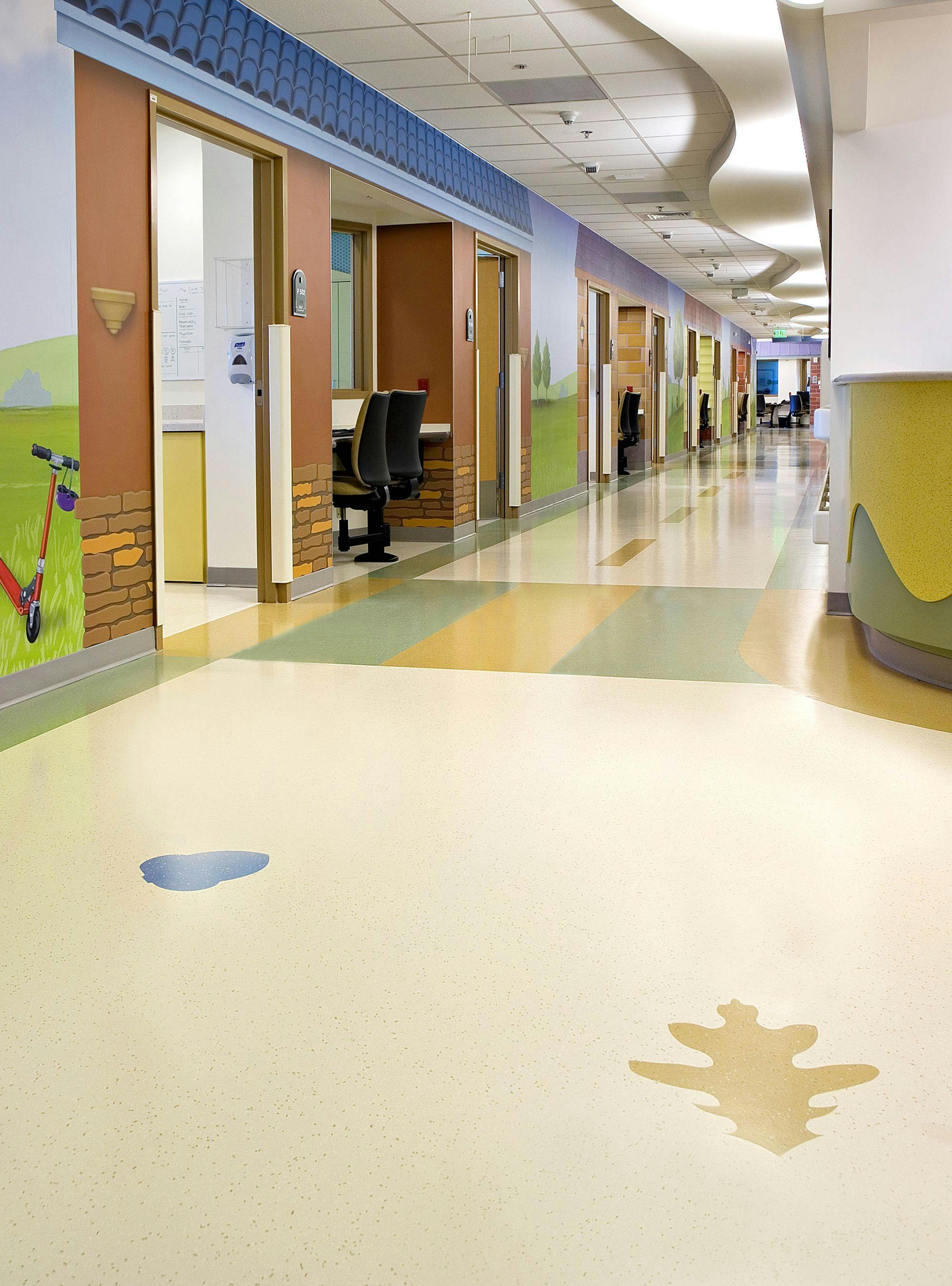
When Quiet Matters: Construction Contractors Must Choose Noise-reducing Flooring for Health Care and Educational Facilities
While many layout and design visions for facilities are practical and positive, they are not always implemented with occupant comfort in mind. Take acoustics for example—many facilities choose flooring options that are easy to clean and maintain without considering the effects on those surrounded by them. However, when these effects start affecting the wellbeing of a patient and the learning or concentration of a student, it’s time to change the way in which facility layouts and design visions are perceived. There are two main industries in which the flooring choice really matters.
Schools
From nurseries and public schools to academies and universities, educational facilities demand a quiet atmosphere to promote and achieve effective learning. In a place where complete concentration is expected, outside noises such as heavy foot traffic can be distracting, to say the least.
In fact, the relationship between outside noises and its effect on student concentration has become so well documented that it is now recognized bythe LEED for Schools Program, which was created by the U.S. Green Building Council as an incentive plan to eradicate daily sound causing distractions.
Through this program, schools can earn points for classroom volume levels that fall under 40 decibels, which are then used to qualify schools for different levels of certification, and in some cases, financial grants.
Health Care
For hospitals, promoting peace and comfort is a primary goal. However, this is not always an easy task.
Whether it’s persistent alarms, traffic throughout the corridors or the transferring of medical equipment, excessive noise can negatively impact the restfulness and healing of a patient.
For this reason, The Hospital Consumer Assessment of Healthcare Providers and Systems stepped in to create a survey that monitors patient satisfaction on 27 categories, including noise. As a result, many hospitals have come to find that patients are displeased with current noise levels.
Flooring Options for Quiet Spaces
When it comes to hospital flooring and school flooring, the more muffled the sound the better, especially when it involves patient wellbeing or student learning. In hospitals and schools, rest and concentration can be negatively affected by objects such as hard-soled shoes impacting hard flooring surfaces. Without anything to absorb these impacts, sounds can spread throughout hallways and echo from wall to wall. Fortunately, there are viable flooring options with effective sound-dampening properties.
Cork Flooring
For sound reduction, Cork flooring is a great choice. Its natural sound-inhibiting qualities allow it to dampen the amount of noise traveling throughout a particular area. With air constituting more than 50 percent of its volume, cork is lightweight and capable of reducing noise by up to 10 decibels. Unlike hard surfaces that allow sounds to be bounced around, cork’s permeable structure allows sound waves to settle within its cellular core and then be broken up.
In addition to the sound absorbing qualities, cork is durable, soft under foot, hypoallergenic, and water, mold and mildew resistant. It is also 100 percent sustainable and recognized by LEED certification for the use of low-emitting materials, recyclable content and rapidly renewable materials.
Rubber Flooring
Rubber flooring is another option that has gained popularity in schools and hospitals for its sound-reducing features. Rubber can be used as traditional top layer flooring or as an underlayment for other flooring types. Just like cork, rubber has the ability to block out noise due to its soft and forgiving structure.
Along with reducing noise by up to 10 decibels, rubber is highly durable, slip resistant, dimensionally stable and easy to maintain. Rubber can also attribute to LEED certification from being recyclable, low-emitting and locally sourced.
Noise affects patient recovery and student concentration. With a few simple tweaks, such as better acoustical flooring, hospitals and schools can benefit from LEED incentives that will also help build a better environment geared toward healing and learning.
Related stories








